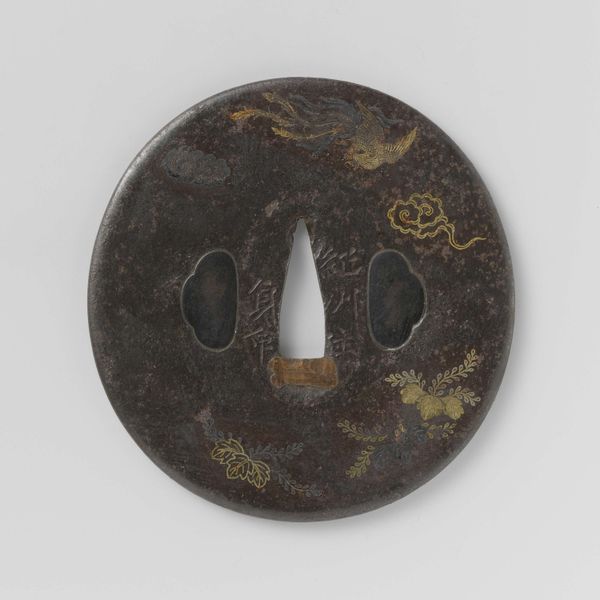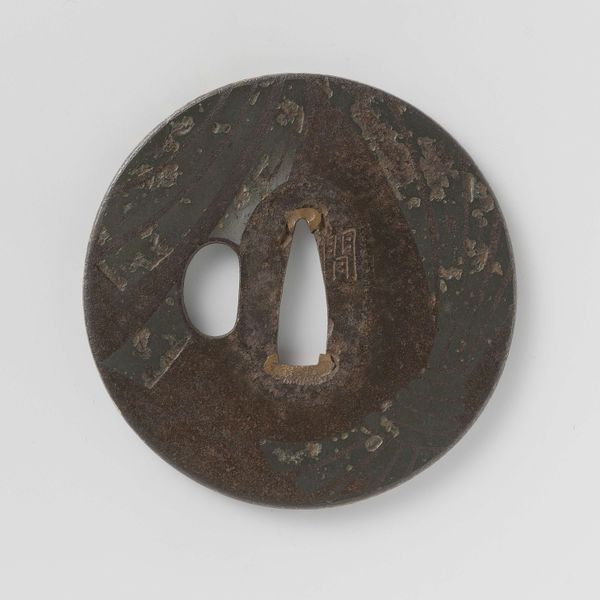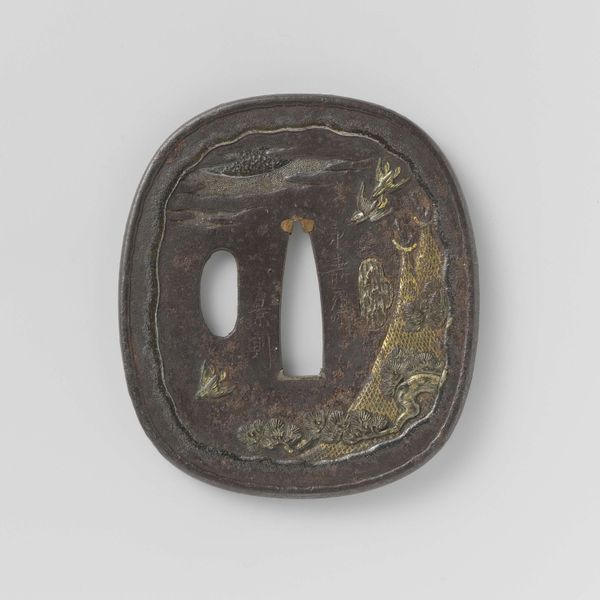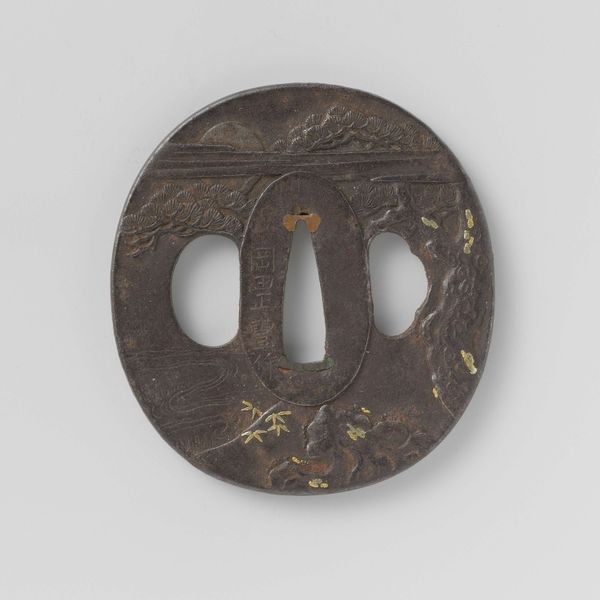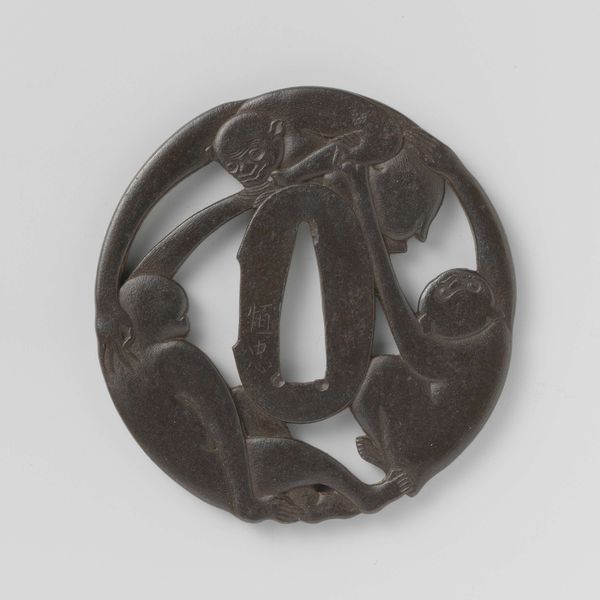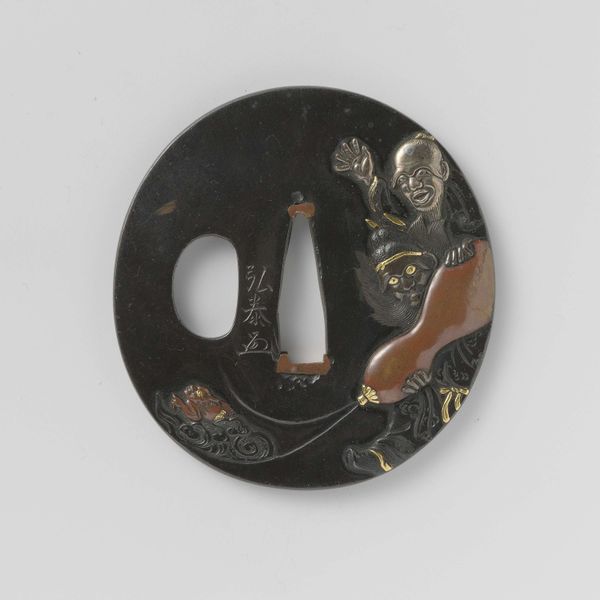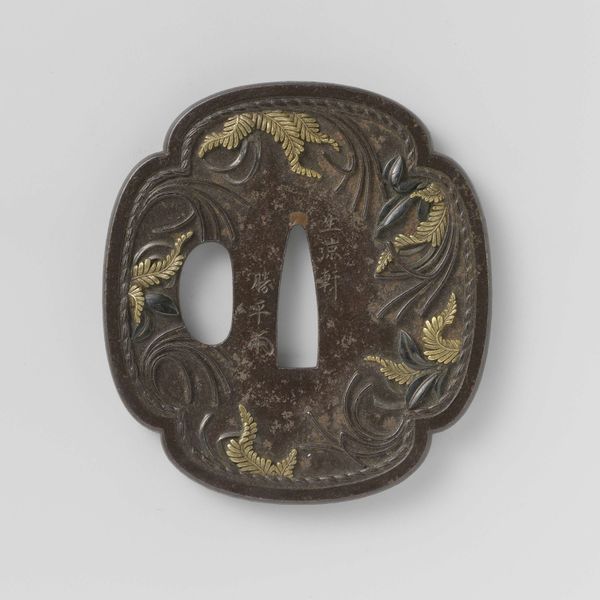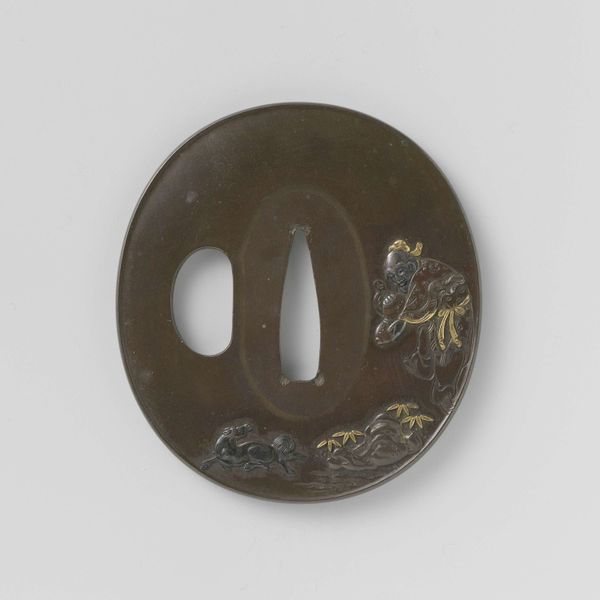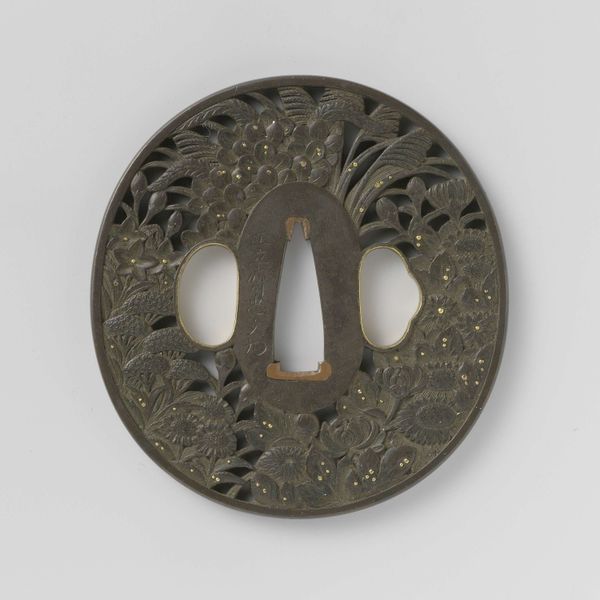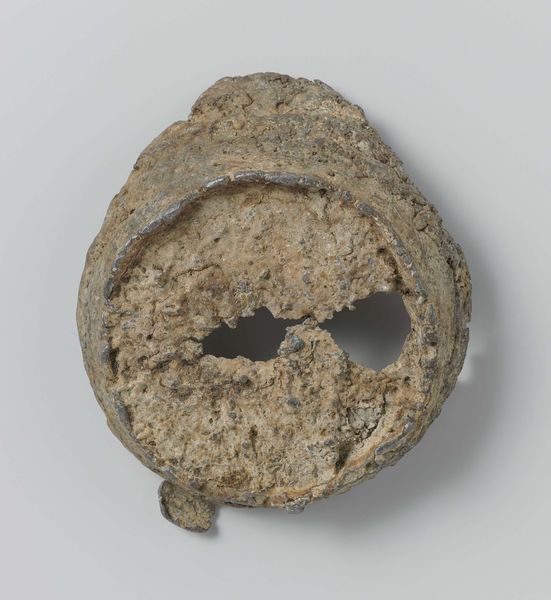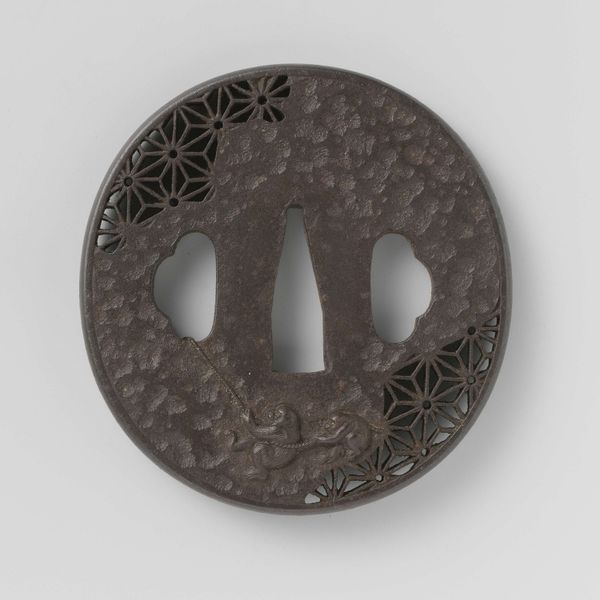
metal, sculpture
#
metal
#
asian-art
#
sculpture
#
decorative-art
Dimensions: height 8.8 cm, width 8.3 cm
Copyright: Rijks Museum: Open Domain
Curator: Let's take a closer look at this fascinating hand guard, or tsuba, created between 1675 and 1725 by Umetada Shichiza. It's primarily crafted from metal and showcases the decorative art style so prevalent in Asian craftsmanship. Editor: Wow, it feels incredibly weighty, doesn’t it? Like it's carrying stories, battles, and a quiet dignity. It's almost a miniature world encapsulated in darkened metal. I love the little bursts of gold detailing! Curator: The details offer glimpses into the warrior culture and artistry of the Edo period. The golden elements highlight key features – a sleeve, some floral motifs, and subtle, understated embellishments. Editor: Sleeve imagery… like holding hidden weapons! Makes me think about ceremonial elegance mixed with martial purpose. I can almost hear the clang of steel and hushed whispers around strategy discussions when I really look at it. Am I projecting? Curator: Not at all! Tsubas, beyond their practical function of protecting the hand, became status symbols. Their design reflected not just the owner’s wealth, but also their taste and allegiances within the complex social and political environment of the time. Think of them as miniature billboards. Editor: So, it was all about power dressing even then? That sort of blows my mind. This little disc tells a complex story, with its owner displaying his affiliations. And Umetada Shichiza ensured he was broadcasting just the right message through carefully chosen art. I wonder, if our handbags and belts could talk... Curator: Precisely. Decorative arts often functioned this way, and understanding their context allows us to decode social relations in past societies. Umetada and other artists working at the time catered to this need for nuanced expression. Editor: It certainly moves beyond a piece of "functional design". Now, when I see this in a museum showcase, I’ll remember it isn't just a shield for a hand. It’s more like a coat of arms made metal with stories literally forged into it. Curator: Indeed. Objects such as these remind us that what appears as mere ornamentation can hold profound cultural and historical significance. Every mark matters, every embellishment spoke volumes. Editor: I feel changed.
Comments
No comments
Be the first to comment and join the conversation on the ultimate creative platform.
